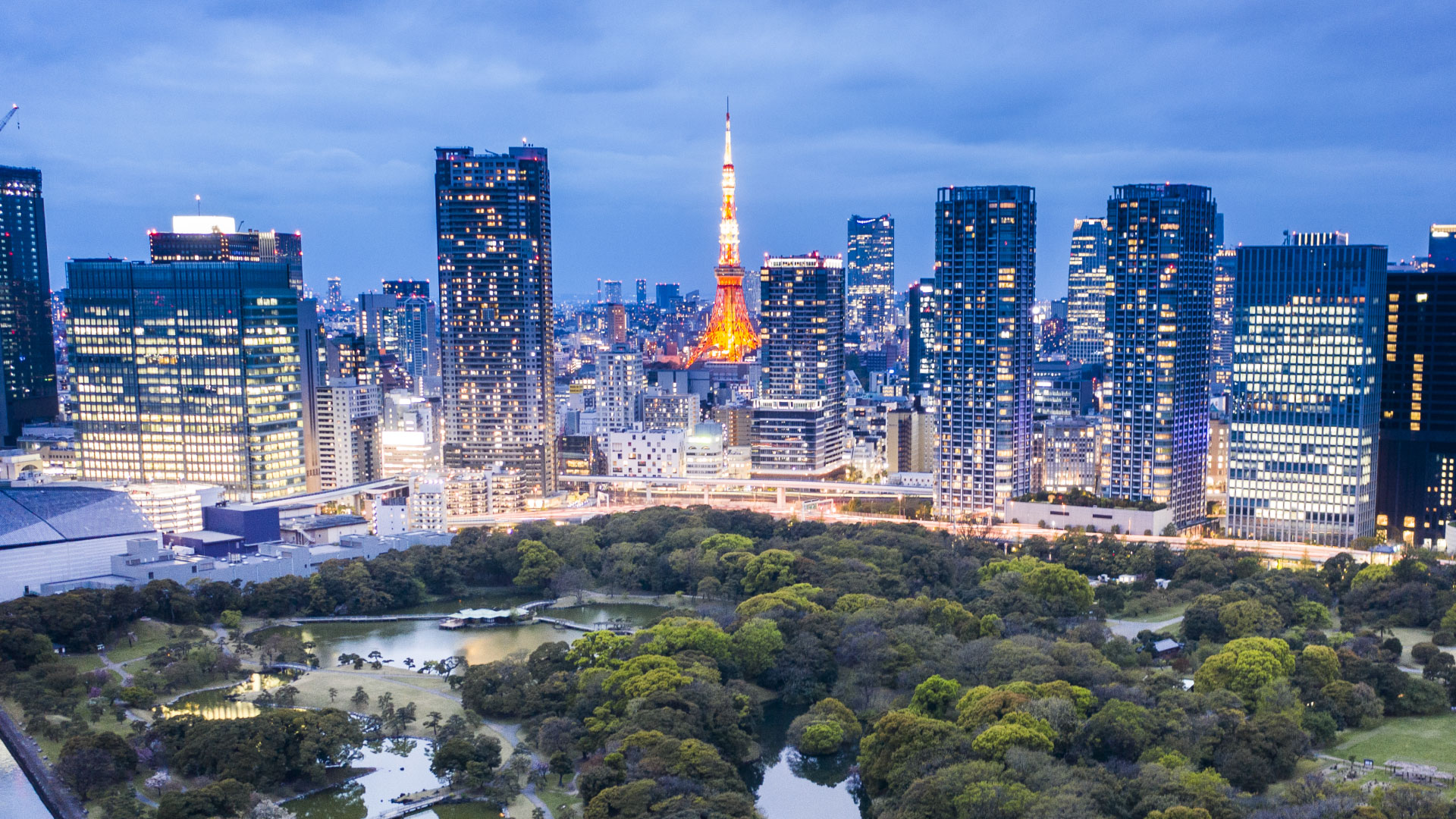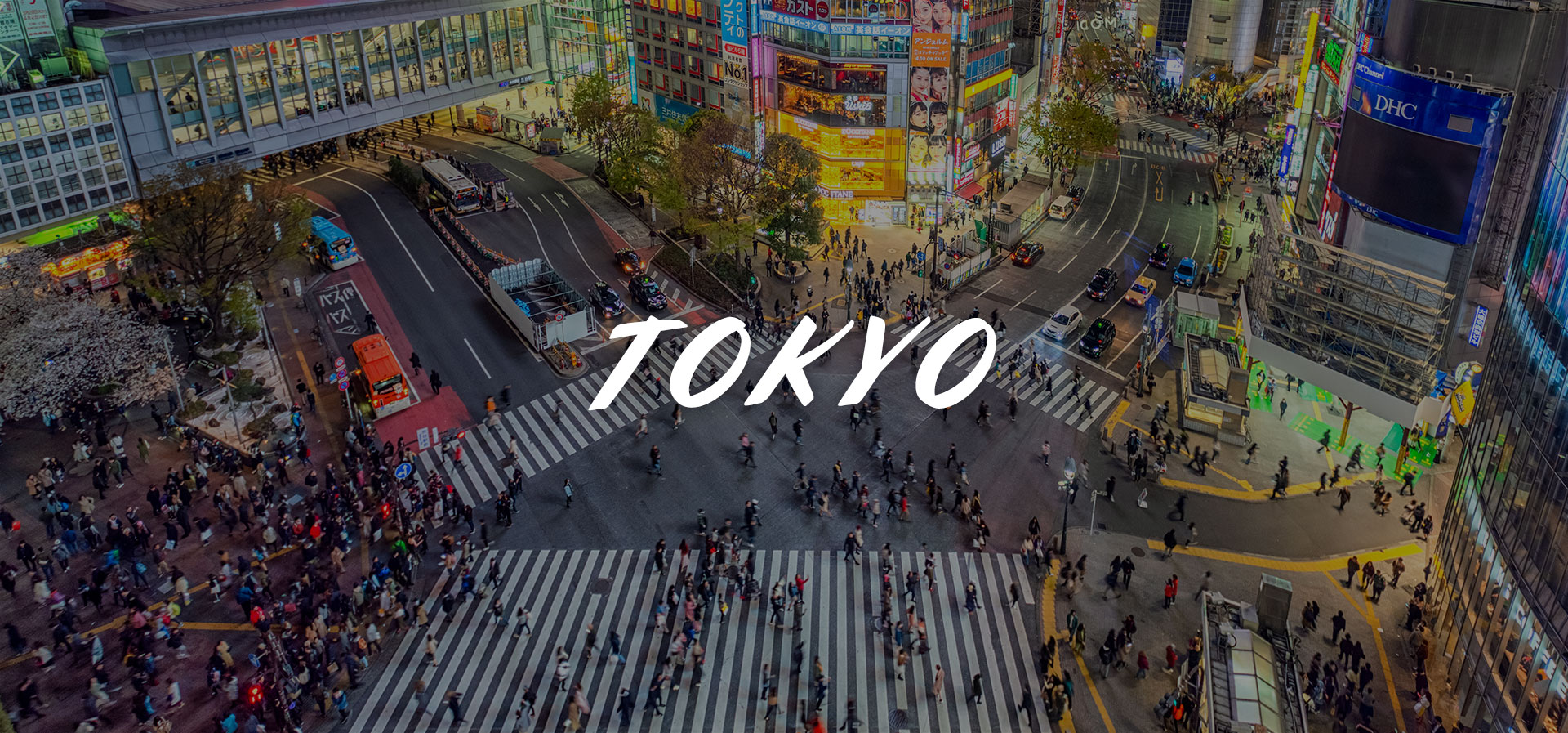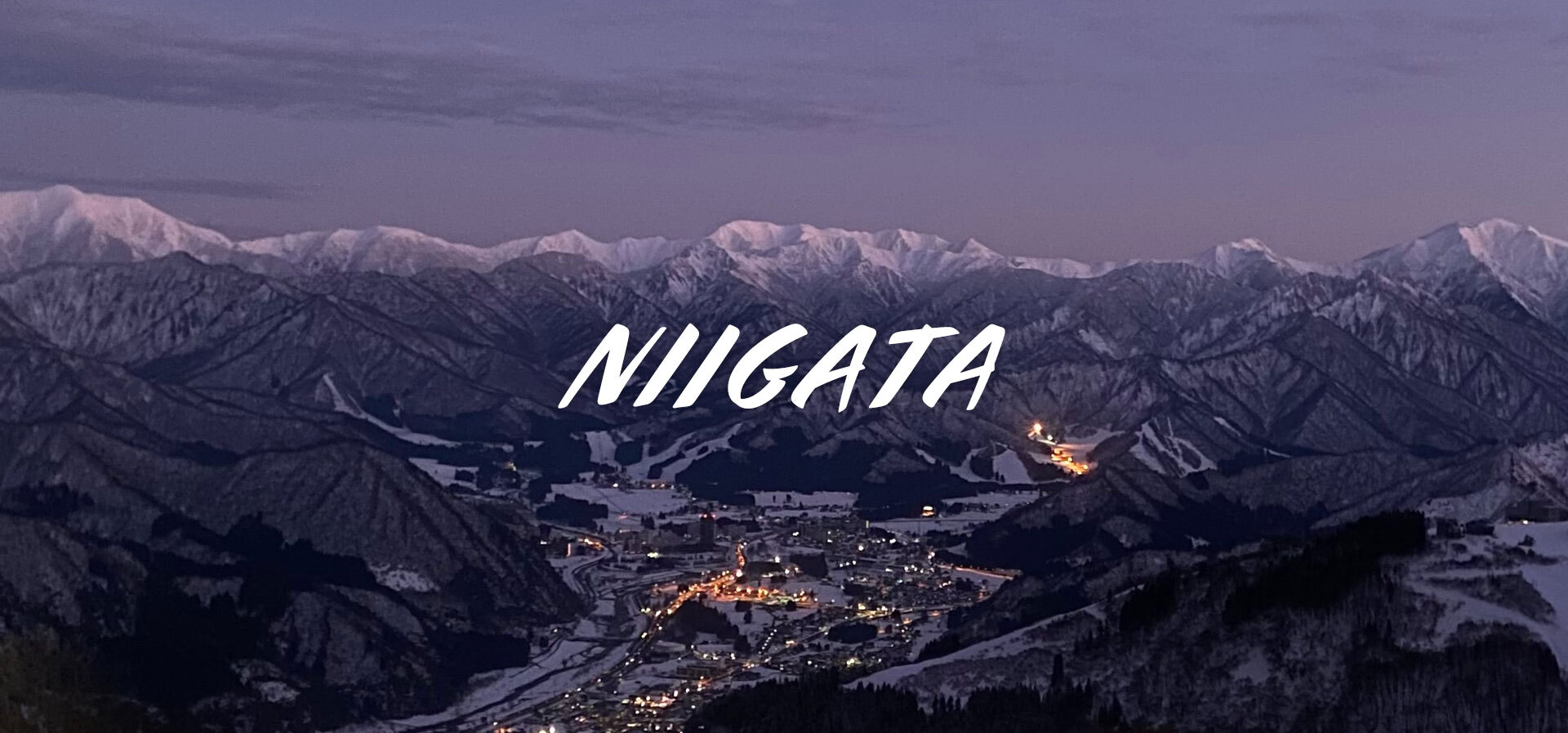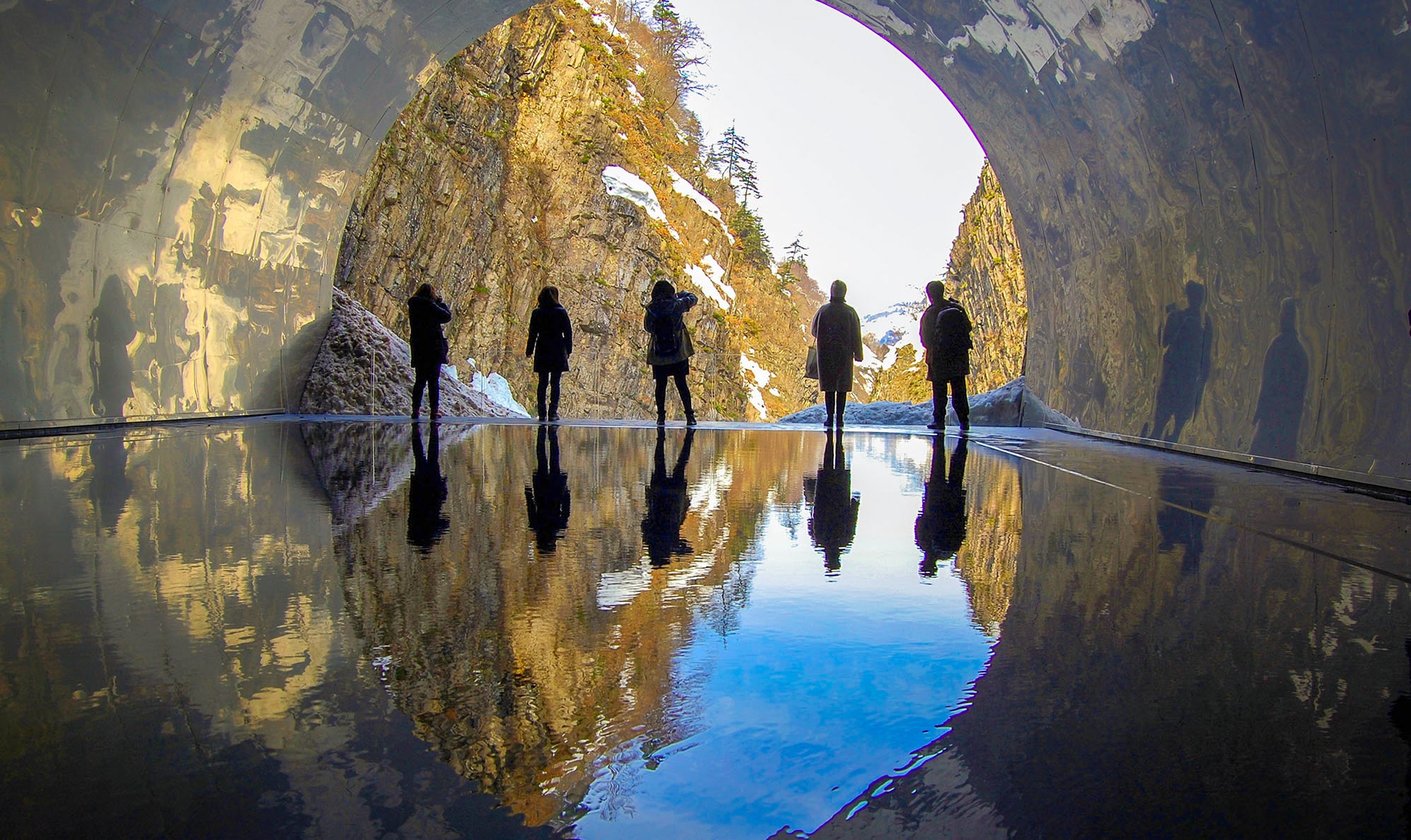
Tokyo to Niigata:
From the Kaleidoscopic Capital to the Idyllic North

Japan’s urban and rural adventures reward the curious traveler.
Tokyo is infinitely exciting, offering sights and experiences to fill any itinerary with culture, food, and opportunities to explore. It is a city where old meets new and tradition and modernity co-exist. But just a little under two hours away via bullet train is Niigata Prefecture, offering winter sport adventures on pristine slopes, stunning natural vistas and unique local cuisine and sake.
With Japan’s borders gradually reopening, now is the perfect time to explore both sides of Japan. Take in the urban energy and dynamic cultural spaces of Tokyo before heading north to Niigata for an unforgettable excursion in Japan’s countryside.

Traditional culture and culinary escapades
With centuries of history breathing life into every corner of the neighborhood, Asakusa is a hub of traditional culture in Tokyo. Visit Asakusa Engei Hall, an institution devoted to the art of rakugo—traditional Japanese comedy—where a single comedian tells elaborate, rapid-fire stories while playing different characters.
Nearby lies the city’s oldest temple, Sensoji Temple, famed for its iconic red lantern hanging at its Kaminarimon Gate entrance. Meanwhile, Hoppy Street is the perfect place to enjoy a tasty (and budget-friendly) meal at a traditional izakaya, before hopping on a jinrikisha for a private rickshaw ride, or taking a “water bus” cruise to see the sites along the Sumida River.
For culinary connoisseurs, looking for a taste of old-meets-new, Hobo Shinjuku Norengai is a collection of over ten modern izakayas and restaurants in one old-fashioned warehouse. Shops here excel at everything from snacks like gyoza (pot stickers) and yakitori (grilled chicken skewers), to Showa-era homestyle dishes like omurice and ramen. Korean and Spanish cuisine is also available, offering international flavors.
Urban relaxation and wellness
Wellness and tranquility are fundamental aspects of Japanese living. Tokyo Skytree, the world’s tallest broadcast tower and second tallest man-made structure, offers yoga sessions on its 1,476 feet (450m) high observation deck. The class welcomes beginners, giving visitors to Japan a chance to stretch and re-focus, while taking in breathtaking views of the city. Afterwards check out Solamachi, located at the foot of Tokyo Skytree, featuring over 300 shops and dining options as well as the Sumida Aquarium and the Planetarium Tenku where visitors can gaze into the night sky.


Surrounded by office towers in the heart of central Tokyo, Hoshinoya Tokyo gives visitors the chance to soak their weary bones after a day’s shopping. Let its rejuvenating hot springs ease your aches with water that flows to the 17th floor from almost 5000 feet beneath the hotel. Each floor resembles a ryokan inn, and in the communal areas staff dressed in modern-style kimonos serve guests seasonal snacks and Japanese tea. Hoshinoya is located adjacent to the Imperial Palace gardens, providing easy access to long walks on the immaculately curated, spacious grounds.
Japan’s capital in a new light
Marunouchi is home to Tokyo’s financial district and embodies the stunning contrast between classical and modern. Here, visit the architectural marvel that is Tokyo Station, originally opened in 1914 it survived the Great Kanto Earthquake in 1923 and now houses one of the most advanced train systems in the world. Every year from autumn to mid-February, the area is home to the Marunouchi Illumination. A walk along the cobblestone streets of the Naka-dori shopping area will reward visitors with spectacular city views complemented by trees draped in elaborate Christmas lights.

Tokyo is constantly being re-imagined as urban development continues on a grandiose scale throughout the city. Newly reopened Miyashita Park, in the popular Shibuya district, is an example of former industrial infrastructure reborn as a cultural and commercial space. Originally opened in 1930 as a greenway, today Miyashita Park has been converted into a modern shopping complex complete with a rooftop park and skateboarding area. Visitors with a sweet tooth should definitely stop in at the KitKat Chocolatory where they can make their own chocolate bar.


Exhilarating mountains and snow-filled adventures
Just a little less than two hours from Tokyo on the bullet train, Niigata offers incredible experiences in the winter season, including skiing and snowboarding on powdery slopes, refined hospitality and relaxation at traditional ryokan, and Japanese cuisine and sake, rich in tradition and seasonal nuances.
Alpen Blick is a uniquely Japanese ski lodging, offering excellent access to the slopes at the base of Ikenotaira ski resort, one of Mt. Myoko’s four major winter destinations. Here, visitors can enjoy superb skiing and snowboarding, including runs for both experts and beginners, on short adventures across wide slopes in the foothills of the mountain to longer runs of up to 2.5 miles (4 km). In the evening, hop in a natural, outdoor hot spring and relax with the resort’s spa facilities while sampling the house-brewed Myoko Kogen Beer and enjoying a Japanese buffet (known locally as a Viking).
Located slightly further north in the city of Myoko, a stay at Lotte Arai Resort puts visitors in the heart of Mt. Myoko’s scenic landscape against a vast swath of gorgeous countryside. While staying in one of the resort’s comfortable, modern guest rooms, enjoy snow-filled mountain adventures in style, including amazing views of Mt. Okenashi. Lotte Arai Resort has been internationally recognized for its access to the slopes, being named Japan’s “Best Ski Resort for Powder,” “Best Family Ski Resort” and “Best Ski Hotel” at the 2022 Ski Asia Awards. The resort also offers activities like snow rafting and snowmobile tours to give everyone a chance to admire the epic mountain views at a more relaxed pace. In the evening guests can take a night-time hike surrounded by stunning illuminated snowscapes and majestic starry skies.
Relaxing ryokans and soothing hot springs
An extended stay at a Ryokan, or traditional Japanese inn, is one of the best ways to fully experience Japanese hospitality, fine dining and relaxation. Ryokan Okayama, offers modern, comfortable rooms and exceptional cuisine focused on fresh seafood (Iwagaki oysters, rockfish and prawns), mountain vegetables, Koshihikari brand rice produced in Myoko and local Kubiki Wagyu beef. For travelers looking to reinvigorate themselves, a soak in natural hot spring waters with a view of the snowy landscape and starlit sky will refresh your body and mind for the next day’s adventure.
Ryokan come in different shapes and sizes, and Ryokan Seifuso, offering ski-to-door access to Niigata’s Akakura Kanko Ski Resort, is a storied establishment with plenty of classic Japanese touches. Guest rooms feature tatami woven straw mat floors and comfortable low futon bedding. Traditional cuisine makes the best of local ingredients, for a sustainable, farm-to-table experience, or in this case sea-to-table as the menu at Ryokan Seifuso highlights the region’s best, and freshest crab. Lastly, reinvigorating hot springs will melt away your travel fatigue while idyllic snow country views take your breath away.


Japanese cuisine and sake defined by tradition
A ryotei is a traditional type of high-end Japanese restaurant designed to represent a region’s food culture and are known for their immaculate gardens and for hosting traditional plays. In the nearly 150-year-old Japanese restaurant Ryotei Ukiyo, visitors can enjoy Japanese gourmet meals such as sweet shrimp sashimi and grilled eel, or book ahead for the exquisite kaiseki ryori dinner, an extravagant multi-course meal with stunning presentation, focused on seasonality and tradition. The building itself is registered with the Japanese government as a Japanese Tangible Cultural Property, and each room is immaculately curated to represent classic Japanese design aesthetic, including rustic tatami floors, translucent paper doors and ambient lighting.
In Niigata, visitors can also learn more about world-renowned Japanese Sake. At Kiminoi Shuzo sake brewery, first established in 1842, learn all about the traditional brewing process of sake with a free sampling tour, and discover how the rice polishing process affects the final flavor profile. Blessed by abundant snowfall, which directly feeds into riverbed water from the Yashiro River stemming from Mt. Myoko, this region is perfectly suited for the water supply and temperature control required to fine-tune the nuances of this unique rice wine.
The urban sprawl of Tokyo is endlessly fascinating, but taking the time to explore the idyllic charm of Japan’s wintry countryside in Niigata is essential, too. Whether you’re invested in scintillating cityscapes, braving the slopes or traditional cuisine and relaxation, a wintertime visit to both Tokyo and Niigata will enhance your understanding of Japan and make for an unforgettable journey.
Watch next
In light of Covid-19 and restricted international travel, the recommendations in this article are for future considerations.

















